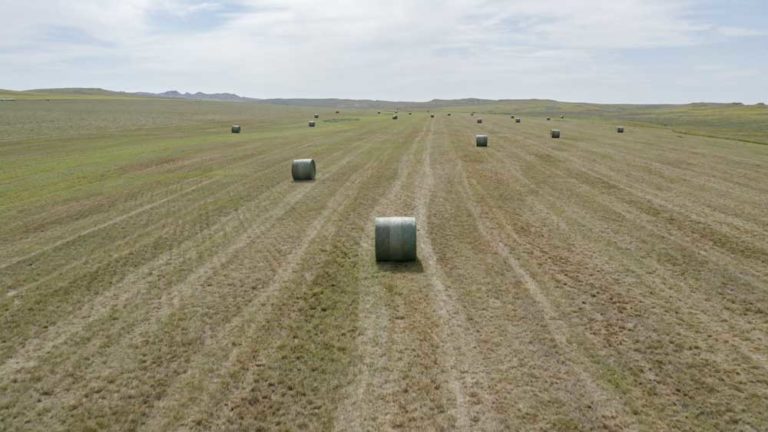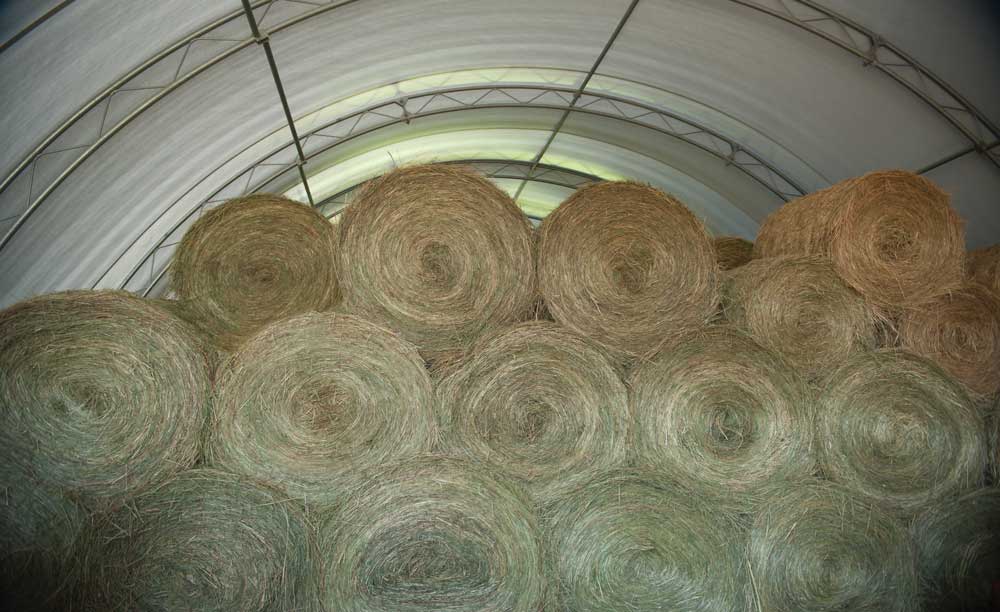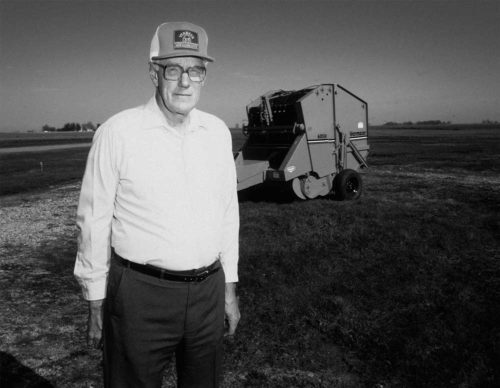
Bale hay or hire it done? Think about these hay cost variables.
May 2021
It’s a decision many cow-calf producers face when weighing how to best sustain their herds. Should you hire a custom producer or make your own bales?
The decision whether to bale hay or hire it done often ultimately boils down to cost. But it’s not always a simple decision, and a well-informed decision takes into account a number of variables.
“You have to know what it’s going to cost you to produce your own bales. That way, you will have something to compare to market prices,” said University of Tennessee Extension Livestock Marketing Specialist Andrew Griffith. “I see larger hay producers who know down to the nickel how much it costs to produce bales.”
Haymaking or hay-buying cost variables to consider
There are a lot of hay cost facets to think about when determining what’s right for your operation. A true cost analysis should stretch from the beginning of the haymaking process to when it’s fed. Think in terms of these variables when weighing your options:
![]()
Equipment and operations. This includes not just the equipment purchase price but also what it will cost to operate and maintain that equipment — like a tractor, baler, hay rake, mower and bale wrapper — during its operational lifetime. Also account for things like depreciation in tracking those costs over time, as these factors can affect your overall equipment costs. Here’s a breakdown of hay equipment ownership and operating costs.
![]() Forage crop management. If you’re producing and baling your own forage crop, you need to be attentive to the agronomic practices necessary to raise a good crop. Account for the cost of inputs like fertilizer and the time to apply it versus the cost to hire a contractor to apply it. Consider these agronomic practices to establish and sustain your forage crop. If you have the equipment for these types of field operations and can handle them cost efficiently, it may be a better option than working with a custom sprayer or fertilizer applicator, for example.
Forage crop management. If you’re producing and baling your own forage crop, you need to be attentive to the agronomic practices necessary to raise a good crop. Account for the cost of inputs like fertilizer and the time to apply it versus the cost to hire a contractor to apply it. Consider these agronomic practices to establish and sustain your forage crop. If you have the equipment for these types of field operations and can handle them cost efficiently, it may be a better option than working with a custom sprayer or fertilizer applicator, for example.
![]() Bale quality and quantity. The idea of economies of scale applies to producing a forage crop. In general, the larger your operation, the lower your per-bale cost will be to maintain the machinery and equipment necessary to do it yourself. If yours is a smaller operation, it may be less cost effective to own and maintain the equipment to make your own bales versus working with a custom producer. Also, think about the number of acres you own or rent and if there is enough land to produce the hay tonnage you need. Lastly, factor in your hay quality expectations; sometimes a custom operator isn’t always available at the optimal haymaking time, so quality can potentially suffer.
Bale quality and quantity. The idea of economies of scale applies to producing a forage crop. In general, the larger your operation, the lower your per-bale cost will be to maintain the machinery and equipment necessary to do it yourself. If yours is a smaller operation, it may be less cost effective to own and maintain the equipment to make your own bales versus working with a custom producer. Also, think about the number of acres you own or rent and if there is enough land to produce the hay tonnage you need. Lastly, factor in your hay quality expectations; sometimes a custom operator isn’t always available at the optimal haymaking time, so quality can potentially suffer.
![]() Time. Getting a forage crop harvested and baled has to happen within a specific timeframe to maximize quality and quantity. Not only do you have to make sure your crop is produced in that timeframe — which can be difficult when working with a custom operator — you have to make sure haymaking is a cost-effective use of your time and that of your workforce. You may be better off to use your time on other jobs on your operation versus producing bales. It’s a key variable to consider.
Time. Getting a forage crop harvested and baled has to happen within a specific timeframe to maximize quality and quantity. Not only do you have to make sure your crop is produced in that timeframe — which can be difficult when working with a custom operator — you have to make sure haymaking is a cost-effective use of your time and that of your workforce. You may be better off to use your time on other jobs on your operation versus producing bales. It’s a key variable to consider.
![]() Labor. Factor in the labor requirements of your general workforce to produce bales. For some producers, having jobs for workers to do in “slow” times on the farm, like making hay between other crop field operations, for example, is important in retaining a qualified workforce. Producing your own bales is one way to do this when workers would ordinarily be idle.
Labor. Factor in the labor requirements of your general workforce to produce bales. For some producers, having jobs for workers to do in “slow” times on the farm, like making hay between other crop field operations, for example, is important in retaining a qualified workforce. Producing your own bales is one way to do this when workers would ordinarily be idle.
![]() Custom rates and availability. If you’re in an area with a lot of custom hay producers, pricing may be competitive. If demand is much stronger than supply, the hay cost per bale may add up quickly and make working with a custom producer a less-attractive financial option.
Custom rates and availability. If you’re in an area with a lot of custom hay producers, pricing may be competitive. If demand is much stronger than supply, the hay cost per bale may add up quickly and make working with a custom producer a less-attractive financial option.
Once you’ve accounted for these variables individually and how each one can influence others in your specific situation, you’ll be more prepared to make a decision on whether to produce your own hay or buy hay from a custom operator.

To find the lowest-cost option, Griffith recommends checking your state’s annual custom farming rate survey guides to get a feel for what you will pay for a custom operator to produce bales, then figuring out what it will cost you to produce your own bales. Custom farming rate data is typically available from each state’s land-grant university extension service; see some examples here.
Once you have a cost comparison based on the numbers to bale hay versus hiring a custom operator, consider finally your primary business. If you raise both cattle and forage crops but the latter is primarily to support your livestock and less of a revenue focus, you may be better off purchasing hay. If you’ve got the acres, time, labor and equipment, you’re more likely to be able to make it a cost-efficient part of your operation.
“Think about all these types of things, because it’s different from operation to operation,” Griffith said. “Just because you have a cow herd doesn’t always mean you need to maintain a full lineup of hay equipment. But if you have good equipment or the dollars to purchase, and the time to make your own bales, it might be the better option. You just have to look at it specific to your own operation.”
This article contains third-party observations, advice or experiences that do not necessarily reflect the opinions of Vermeer Corporation, its affiliates or its dealers. Individual results may vary based on care and operation of machine and crop and field conditions, which may adversely affect performance. Vermeer Corporation reserves the right to make changes in engineering, design and specifications; add improvements; or discontinue manufacturing at any time without notice or obligation. Equipment shown is for illustrative purposes only and may display optional accessories or components specific to their global region. Please contact your local Vermeer dealer for more information on machine specifications. Vermeer and the Vermeer logo are trademarks of Vermeer Manufacturing Company in the U.S. and/or other countries. © 2021 Vermeer Corporation. All Rights Reserved.

